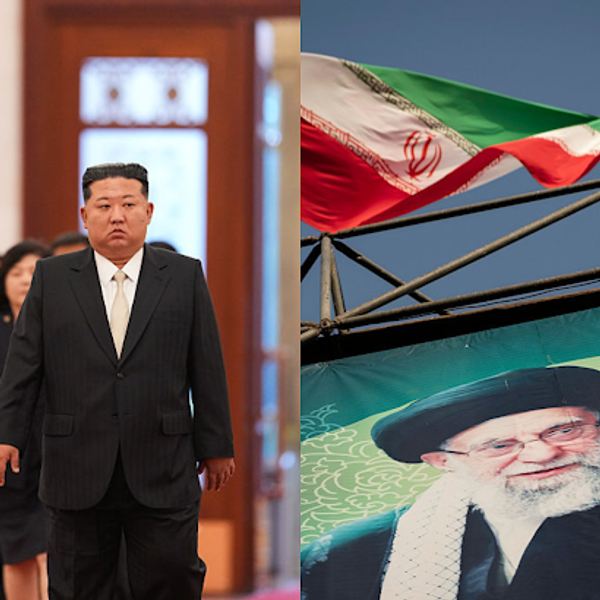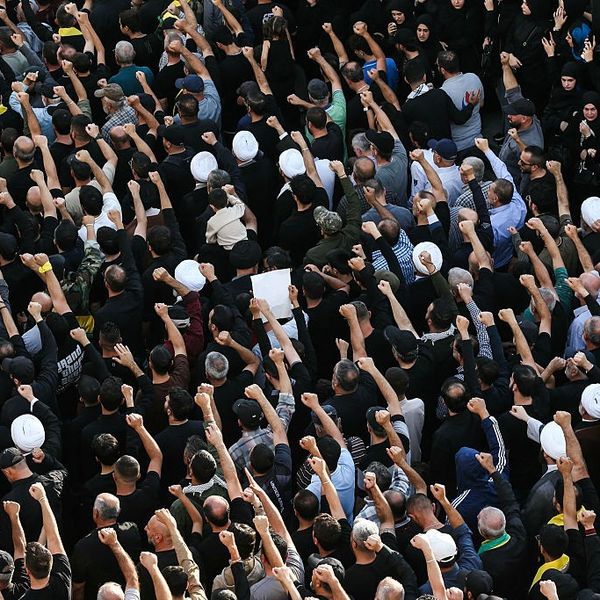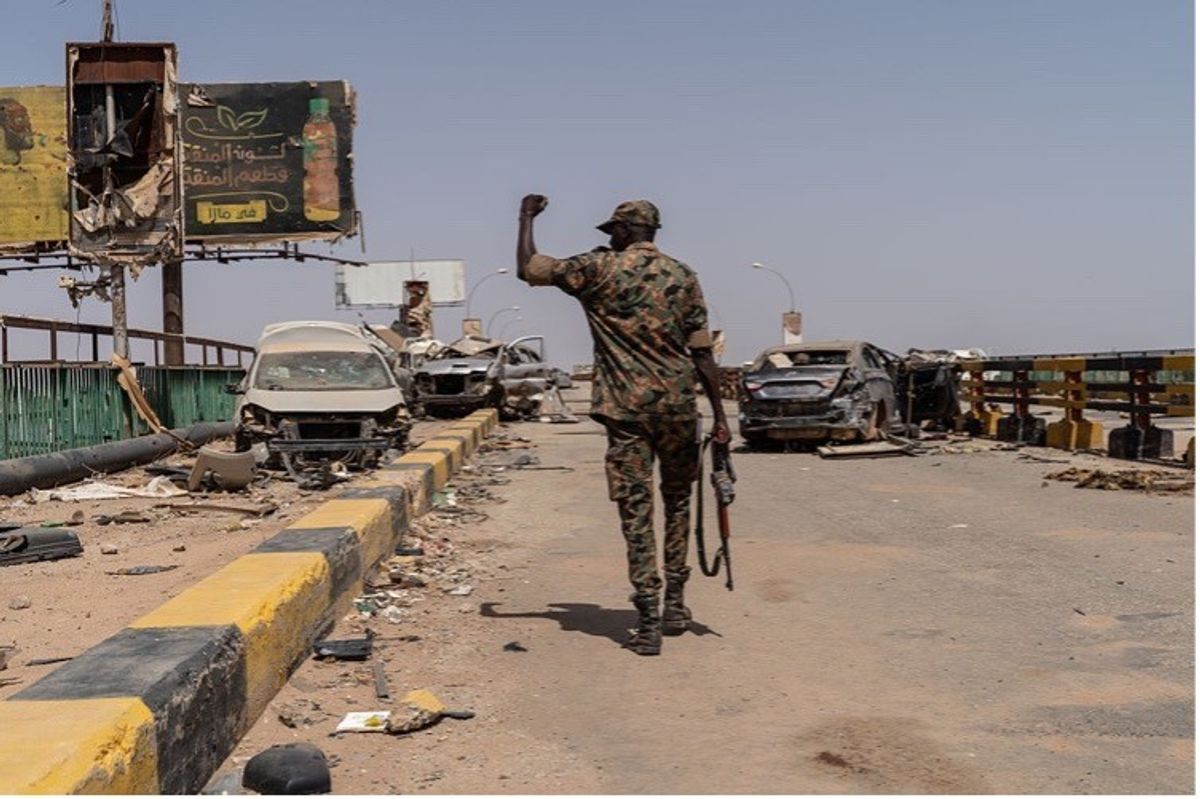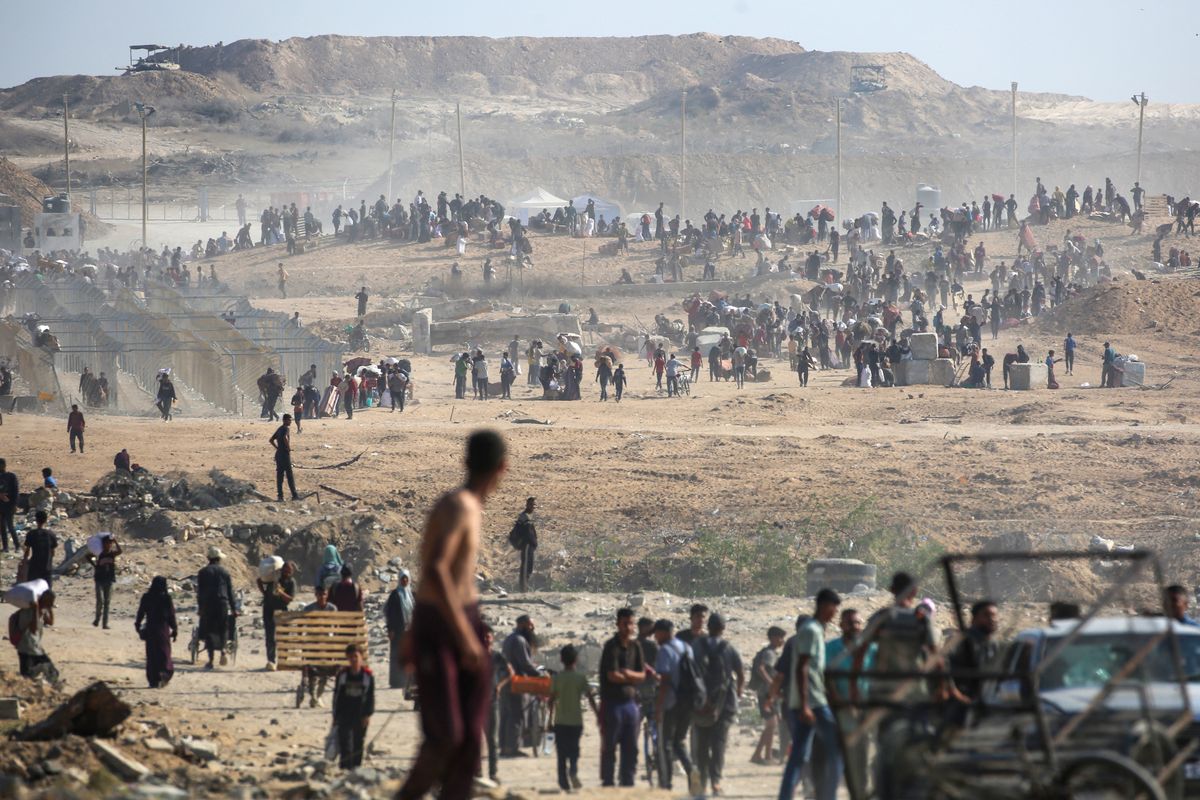OPINION — Iran and Israel have been at odds since the Islamic Revolution in 1979, when the new Islamic Republic declared Israel to be illegitimate and pursued a confrontational strategy. Tensions have increased over the years with Israel frequently accusing Iran of uranium enrichment and nuclear weapons development and threatening military action. The dynamic has become more dangerous since the Hamas-led October 7, 2023, attack on Israel, which resulted in 1,200 deaths and the taking of 250 hostages. Iran, a longtime Hamas ally and supporter, publicly welcomed the attack. Hostilities have continued since, shifting from conflict between Israel and Iran-aligned Hezbollah and Hamas to direct military engagement with Tehran. Consequently, the idea of regime change in Iran has re-emerged, with Netanyahu declaring the Islamic Republic’s days “numbered” — a view echoed by Donald Trump and other leaders.
Yet the reality inside Iran tells a more intricate story. Despite decades of sanctions, political repression, and unrest, the regime has endured. This article examines the internal and external pressures shaping Iran’s political future, emphasizing its cultural continuity and institutional resilience.
Institutional Durability and Strategic Adaptability
The political structure of the Islamic Republic of Iran is a complicated blend of theocratic principles and certain republican institutions. The Supreme Leader is the highest authority, with extensive constitutional responsibilities that include supervision of the armed forces, the judiciary, and important state institutions, like the Islamic Revolutionary Guard Corps (IRGC).
The structure of power in the Islamic Republic is layered, with elected positions like the presidency and parliament coexisting with unelected entities like the Assembly of Experts and the Guardian Council. Despite their limitations, these electoral processes function as avenues for policy discussion, elite bargaining, and restricted public involvement. Some observers contend that rather than depending exclusively on repression, this dual structure allows the government to absorb and regulate internal tensions through institutional flexibility (Chehabi & Linz, 1998; Svolik, 2012).
Iran has had several periods of internal turmoil, such as the Green Movement in 2009, the riots over fuel prices in 2019, and the protests after Mahsa Amini's death in 2022. Despite this, the political system has proven rather resilient, which is frequently ascribed to the state's capacity to adapt pragmatically to changing social pressures through rhetorical changes, policy adjustments, and targeted concessions to particular groups (Abrahamian, 2008; Keshavarzian, 2009). Such actions, when coupled with a strong security apparatus, have kept dissent from escalating into crises that pose a challenge to the system.
Additionally, internal cohesion has been shaped by external dangers. The political culture centred on security has been influenced by ongoing conflicts with foreign powers, especially those pertaining to Iran's nuclear program and regional operations. According to some academics, this has enabled the government to reinforce narratives of national sovereignty and resistance by framing internal issues as a component of a larger fight against foreign intervention (Sadjadpour, 2020).
When combined, Iran's institutional structure and strategic flexibility inform how long its political system will last. Predictions of impending change are complicated by the state's ability to readjust to both internal and external influences, even though the long-term prospects for change are still unclear. The internal mechanisms that have contributed to political continuity, political complexity, and the limits of foreign intervention in changing the course of a regime that has proven far more resilient than its adversaries have frequently assumed must all be taken into account in any analysis of regime change in Iran, in addition to popular discontent or outside pressure.
The Nationalist Legacy and Foreign Meddling
The ability of the Iranian regime to place internal dissent within a larger narrative of foreign meddling is crucial to comprehending its resilience. This stems from a deeply ingrained historical memory of colonial and imperial meddling in Iran's domestic affairs and is not exclusive to the current leadership. A pivotal moment in Iran's contemporary political consciousness is the 1953 CIA-MI6-planned coup that resulted in the overthrow of Prime Minister Mohammad Mossadegh and the restoration of the Shah. According to academics like Jalal Al-e Ahmad (1962) and Abbas Milani (2015), this incident has fueled a pervasive cultural hostility to foreign involvement, which frequently cuts across ideological lines.
Even in secular and reformist circles, many are reluctant to accept overt outside assistance, especially when it seems politically self-serving or controversial in its symbolism. This historical background influences how opposition movements are viewed when they are thought to have foreign support. The Mojahedin-e Khalq (MEK), a group that was involved in the 1979 revolution but ultimately sided with Saddam Hussein during the Iran-Iraq War and has since gained backing from a number of Western groups and individuals, is one prominent example. Despite its continued support for regime change, the MEK's domestic legitimacy is still restricted, partly because of its affiliation with other parties. "No regime collapses simply because the outside wills it so," as McFaul & Milani, 2023 observes. Even if they are amplified externally, legitimacy and delegitimization are inwardly formed. Regardless of their political affiliation, the Iranian population frequently regards movements with foreign affiliations with suspicion, highlighting the limitations of outsider influence over domestic affairs.
Foreign nations' symbolic actions follow similar processes. For example, the Israeli government's 2024 display of the pre-revolutionary Iranian flag on the city hall in Tel Aviv, which was meant to show support for Iranian dissidents, caused conflicting responses. Although some members of the diaspora might find resonance in such gestures, many Iranians saw them as performative or politically useful. They strengthened the Islamic Republic's long-standing narrative of foreign aggression and national siege, which the regime has regularly used to strengthen its position during internal crises.
In Iranian politics, the legacy of foreign interference is still a potent topic. Any examination of Iran's chances for regime change must include the persistent influence of nationalist feeling as well as the nuanced perceptions of outside intervention held by both the ruling class and the opposition. Instead of serving as a simple spark, foreign assistance may end up becoming a variable that unpredictably influences the legitimacy and course of opposition movements.
The Cipher Brief brings expert-level context to national and global security stories. It’s never been more important to understand what’s happening in the world. Upgrade your access to exclusive content by becoming a subscriber.
Civil Society and the Potential for Internal Reform
Iran's civil society is nonetheless resilient and dynamic in spite of institutional limitations. In contrast to earlier cycles of opposition, the 2022 protests that followed the murder of Mahsa Amini, a 22-year-old woman who died while in the custody of Iran's morality police, sparked a surge of grassroots mobilization. This feminist, youth-driven, decentralized, and digitally coordinated campaign, which came together under the motto "Woman, Life, Freedom", marked a paradigm shift in the methods and objectives of Iranian activism (Zan, Zindagi, Azadi) (Sreberny & Khiabany, 2023). These protests were unique not only because they crossed socioeconomic, religious, and ethnic boundaries, but also because they questioned state-imposed intellectual control and patriarchal standards.
The most likely routes to long-term democratization, according to some academics and practitioners, are cultural change and legislative reform rather than revolutionary upheaval. Shirin Ebadi (2022), a Nobel laureate, has long argued that institutional reform, civic education, and human rights awareness are the foundations of long-term political change in Iran. Similarly, reformist theorist Abdol Karim Soroush (2000) argues that slow societal maturation, theological reinterpretation, and intellectual plurality are essential to Iran's political development. Both emphasize the significance of endogenous reform over exogenous pressure, warning that models of change that are imposed from outside frequently disregard local political and cultural circumstances.
The political elite is not immune to the consequences of this civic awakening. The Iranian government responded to the demonstrations by implementing a two-pronged containment and recalibration strategy: on the one side, stepping up digital monitoring and arrests; and on the other, temporarily loosening the regulations governing the hijab and allowing for some public dissent. Although these tactical changes show some political responsiveness and concern for legitimacy, they do not indicate structural liberalization (Sabet & Vakil, 2023; Rahmani, 2022). According to research on authoritarian resilience, governments make concessions to some demands in order to retain power, not because they are weak (Heydemann, 2007; Brownlee, 2009).
When considered together, Iran's civil society's trajectory indicates a gradual but significant change in civic agency and public awareness. Although it is yet unclear if this momentum will result in political transformation, it illustrates the conflict between societal change and state rigidity. Therefore, this duality between a state attempting to maintain control and a society gradually expanding its boundaries must be addressed in any meaningful examination of regime change or continuity.
Economic Pressures and Sanctions: A Double-Edged Sword
Iran's economic situation is the result of a combination of long-standing external sanctions and domestic mismanagement. While it has caused massive popular discontent, it has also paradoxically bolstered the regime’s resilience. Even though Western policymakers typically characterize sanctions as tools to undermine authoritarian consolidation and promote democratic transition, their efficacy in the Iranian context is still up for debate. Sanctions have facilitated the expansion of semi-legal and informal economic sectors, many of which are dominated by groups associated with the regime, most notably the IRGC At the same time, sanctions have failed to establish a clear path to regime destabilization over time (World Bank, 2023; Vatanka, 2020).
Punishments may have significant unintended repercussions. Economic pressure frequently disproportionately affects the urban middle class, a group historically prone to reformist politics, while also benefiting black-market operators and intensifying rent-seeking behaviors within state institutions (Abrahamian, 2018; Katouzian, 2021). Particularly when unemployment, inflation, and currency devaluation threaten daily stability, the ensuing economic stratification may depoliticize and weaken civil society more than it may empower certain elements of the populace (Esfahani & Pesaran, 2009).
Furthermore, extreme elements have frequently benefited from the political symbolism of sanctions. Hardliners have utilized sanctions as a rallying cry and to denigrate moderate or reformist factions inside the regime by externalizing blame for internal failures and depicting Iran as the victim of Western aggression. The political space available for incremental transformation is further limited by the accusations of weakness or treason leveled at reformist politicians who support contact with the West (Sadjadpour, 2020; Harris, 2017).
In the Iranian case specifically, sanctions have served more as a structural restraint, both politically and economically, than as a driver for change. Although they increase the strain on the Iranian government, it is less clear how they will contribute to or hinder regime change. Economic coercion alone does not seem to be enough to cause systemic political rupture in the absence of a concomitant crisis of legitimacy or elite division.
The Role of the Iranian Diaspora and International Narratives
The Iranian diaspora has become a prominent and politically engaged group in influencing how the world views Iran's internal politics, especially in nations like the US, Canada, Germany, and Australia. This global network contributes significantly to lobbying, media representation, and advocacy campaigns that support democratic reform and human rights. Nonetheless, there is still a complicated and occasionally tense interaction between activism driven by the diaspora and the reality on the ground in Iran.
Exilic political actors frequently emphasize peaceful resistance, regime accountability, and secular governance in their narratives, which are framed through liberal-democratic perspectives. Reza Pahlavi, the previous Shah's exiled son, is a well-known example of someone who has positioned himself as an advocate for a secular, constitutional monarchy based on democratic principles. Although his message strikes a chord with some diaspora members, especially those who yearn for Iran's pre-revolutionary past, it has little traction in Iran itself, where the monarchy's legacy is still up for debate and the general public is more interested in grassroots, decentralized systems of government (Milani, 2023; Vakil, 2020).
Media dynamics in the West further complicate diasporic influence. High-profile foreign viewpoints are frequently favoured by mainstream Western media, which runs the risk of ignoring the variety of criticism in Iran. This type of visibility may unintentionally obscure the domestic actors most involved in local movements, especially women, students, and labour activists working in limited civic venues (Ebadi, 2011; Hashemi, 2019. In order to avoid governmental repression, these local movements are usually horizontally structured, leaderless, and strategically ambiguous (Harris & Tavana, 2019).
Furthermore, by framing internal opposition through global geopolitical ambitions, diaspora-led advocacy, despite its frequently good intentions, can inadvertently instrumentalize domestic activism. Iranian activists who are concerned about the securitization of civil protest or the loss of indigenous agency have occasionally criticized calls for more international sanctions or regime change spearheaded by foreigners (Sadeghi-Boroujerdi, 2021).Amplification and restraint must be balanced in international solidarity initiatives. External assistance for civil society and human rights is essential, but it must refrain from enforcing ideological models or centralizing narratives that mask Iran's diversity of political expression. Sensitivity to the power imbalances between diaspora actors and domestic movements, as well as an understanding that long-lasting change in Iran is more likely to come from inside than to be forced from without, are necessary for an ethically sound and successful strategy.
Everyone needs a good nightcap. Ours happens to come in the form of a M-F newsletter that keeps you up to speed on national security. Sign up today.
Policy Implications and the Limits of Coercive Diplomacy
It is critical to evaluate the limitations of coercive diplomacy and the unforeseen implications of policies that are only focused on regime change. While sanctions, isolation, and military threats are key instruments in the West’s strategy against Iran, they have frequently produced contradictory outcomes. They have rarely resulted in significant liberalization or democratic breakthroughs, while they may be successful in increasing the political and economic costs of particular state behaviors like nuclear enrichment or regional militancy (Byman et al., 2001; Parsi, 2017).
Coercive tools must be used in conjunction with persistent, softer tactics if the larger goal of foreign engagement is to assist the Iranian people and create circumstances that will lead to long-term stability. These include fostering cultural and scientific diplomacy, facilitating access to internet platforms, extending academic exchanges, and protecting the rights of human rights advocates and civil society players. Such initiatives recognize Iran's social and cultural complexity as well as the agency of its people, but they do not necessarily acknowledge the legitimacy of the regime.
A maximalist emphasis on regime change has frequently backfired. It frequently serves to legitimize heightened surveillance and repression of dissent, delegitimize internal reformers, and support hardline narratives of foreign subversion (Takeyh, 2011; Maloney, 2020). Political protest is portrayed in this way as a threat to national security rather than just domestic discontent, which fortifies the security system and reduces room for compromise.
Principled engagement, one that respects Iranian sovereignty while upholding universal principles of transparency, pluralism, and human rights—would be the focus of a more positive policy approach. This acknowledges that significant political change must originate inside Iranian society, but it does not prohibit criticism of state excesses or support for changes.
Iranian scholars like Shirin Ebadi (2022) and Abdolkarim Soroush (2000) contend that the Islamic Republic's development must be indigenous and anchored in Iran's historical, theological, and cultural background. By protecting fundamental freedoms, promoting access to information, and elevating the voices of civil society, external actors can be helpful. They cannot, however, enforce democratic results without jeopardizing their moral authority and tactical viability. Even with the best of intentions, attempts to manipulate political change from the outside can backfire on the same local actors they are meant to strengthen.
Effective international policy in this area must carefully balance opposing repression without devolving into ideological conflict, advancing rights without coming across as tools of regime overthrow, and interacting with Iranian society without using it as a tool for foreign policy objectives. Although this strategy might not be as rhetorically clear as hardline stances, it provides a more practical and long-term route to gradual transformation.
Conclusion
Many international actors still support the idea of changing the Iranian regime, especially during times of internal instability and regional conflict. Such goals are complicated by a more thorough analysis of Iran's institutional structure, historical development, and social resilience. Iran's internal dynamics and cultural uniqueness have frequently been overlooked by the presumption that external pressure—through military intervention, diplomatic isolation, or sanctions can spark political change. As many academics have pointed out, attempts driven by outside forces to overthrow a regime in deeply ingrained political systems frequently have unforeseen repercussions, such as the consolidation of coercive institutions and the reduction of political space (Brownlee, 2012; Lynch, 2014).
Statements from foreign leaders or punitive actions are unlikely to have a greater influence on Iran's future than the changing relationship between its state and people. A complex historical consciousness, a steadfast feeling of national sovereignty, and a political culture moulded by revolution and opposition to foreign dominance all contribute to this relationship (Katouzian, 2009; Milani, 2011). Despite severe restrictions, Iran's civil society remains vibrant through digital dissent, grassroots organization, artistic expression, and electoral participation (Bayat, 2013; Khosravi, 2017). These kinds of involvement, though often fragmented or denied, remain important spaces for negotiating identity and social change.
Any real interaction with Iran by the international community, especially by Western governments and media, must start with an understanding of how complicated its internal processes are. It is necessary to go beyond the dichotomy of coercion or containment in order to support Iran's transformation. According to democracy theorists, long-lasting change rarely comes from outside; instead, it develops within through changes in institutional reforms, elite alignments, and social expectations (Carothers, 2002); Diamond, 2019). A more positive route than regime-change rhetoric may be to respect Iran's sovereignty while allowing room for civil society.
Full references below.
The Cipher Brief is committed to publishing a range of perspectives on national security issues submitted by deeply experienced national security professionals.
Opinions expressed are those of the author and do not represent the views or opinions of The Cipher Brief.
Have a perspective to share based on your experience in the national security field? Send it to Editor@thecipherbrief.com for publication consideration.
Read more expert-driven national security insights, perspective and analysis in The Cipher Brief

















